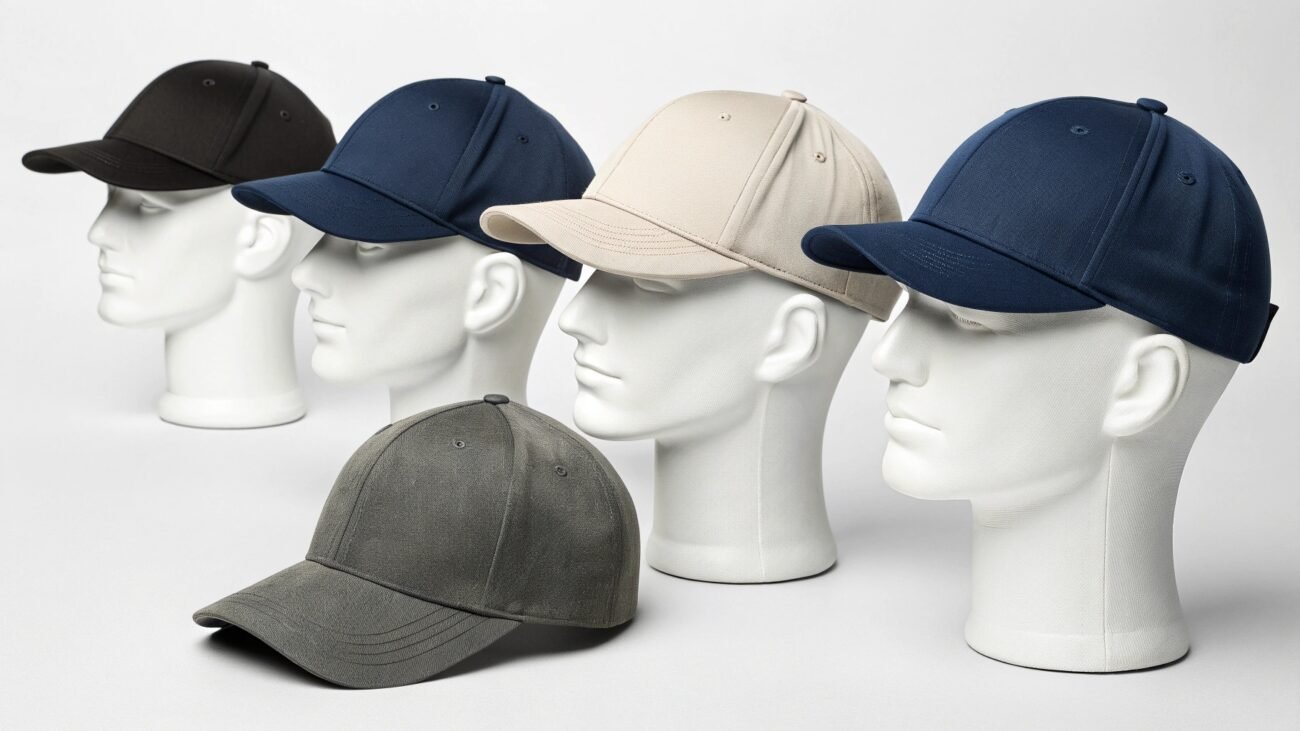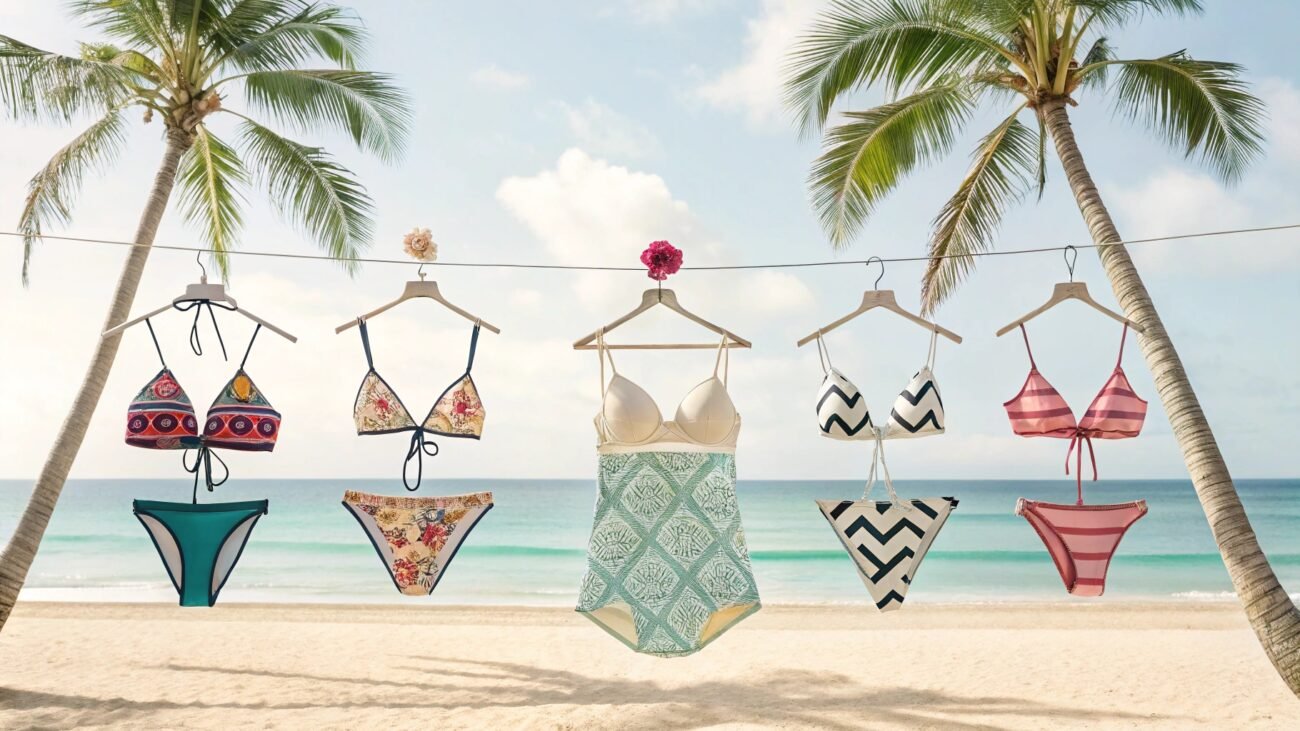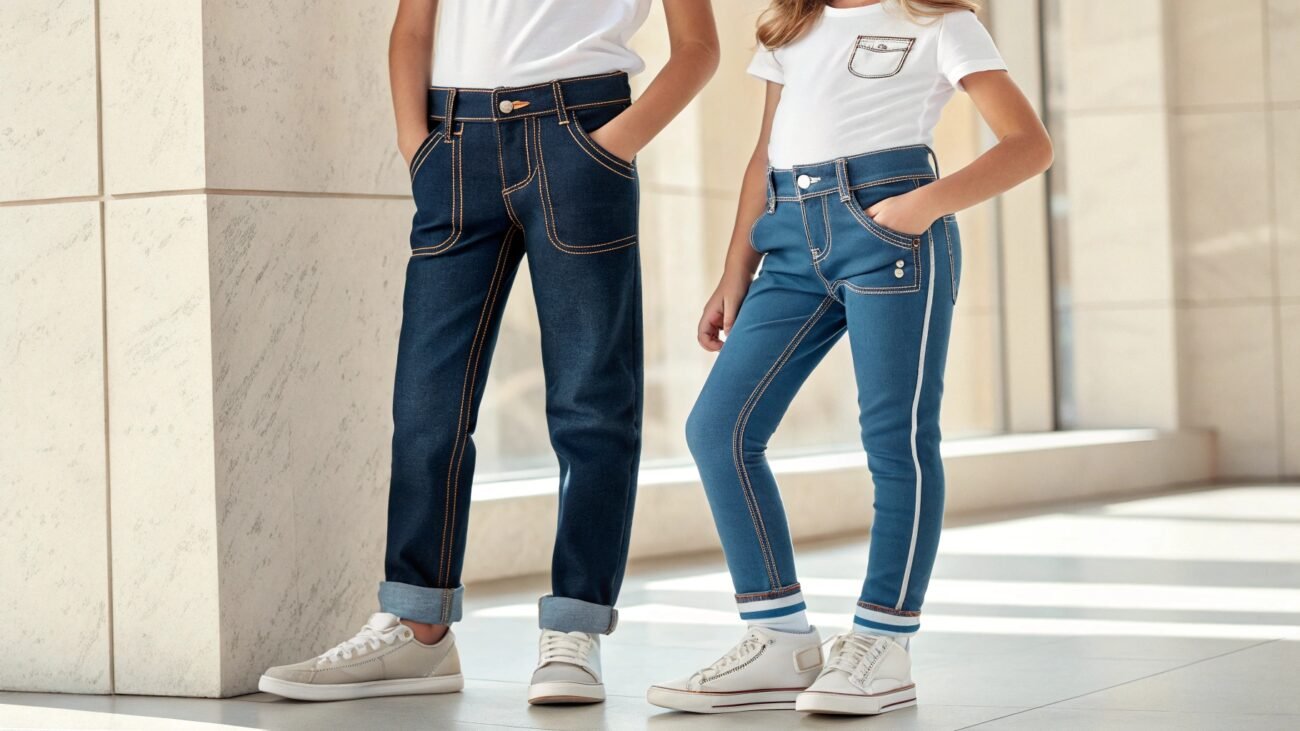We all rely on underwear as a foundational layer of clothing, the unsung hero of comfort and confidence. Yet the sheer variety and number of fabrics, features, and styles available in the market can transform the simple act of choosing underwear into a surprisingly difficult task.
Table of Contents
ToggleAnd failure to consider the right type of underwear brings undesirable consequences, from red marks to rashes in the crotch area and a fitting that is too tight or loose.
This comprehensive article will guide you through the complex world of women’s underwear, equipping you with the knowledge to select the right women underwear types for every occasion and attire.
Without wasting any more time, let’s examine the modalities of women’s underwear types, the fabric material behind the production, and the tricks to getting underwear that fits just right.
1. Exploring the Different Styles of Female Underwear

The market for female underwear is vast and varied, as each kind of female underwear has its own advantages and disadvantages. Different styles of undergarments are suited to certain needs and aesthetics.
Understanding these distinctions is the first step towards a well-rounded and functional undergarments drawer.
(1) Classic Coverage:

These kinds of female underwear embody the true essence of comfort and reliability. They prioritize functionality and a smooth fit under clothing, often featuring clean lines and minimal embellishments. They are the foundation pieces in a lingerie drawer, mostly chosen for their everyday wearability, appeal, and coverage.
- Traditional Briefs: Often considered conventional everyday underwear, briefs are characterized by a waistband that sits at waistlines and offers full coverage to the front, sides, and rear.
The leg openings of briefs are usually positioned at the top of the thigh. They pair extremely well with a wide variety of clothing styles and are the go-to choice for people who prioritize practicality.
- Full Briefs: Taking the coverage feature to the next level, full briefs or high-waisted briefs feature a waistband that extends above the natural waist to the navel region.
This type of underwear for women offers extra tummy support and smoothing, making it a popular choice for those who prefer extra fit and coverage. Full briefs are often considered the epitome of “Retro Aesthetics.”
(2) The Versatile Middle Ground:

These types of women’s underwear offer a striking balance between coverage, practicality, and specialized designs. They are often the go-to choice for those who want something comfortable yet stylish for everyday use.
Some key features of middle-ground underwear are moderate coverage, comfort, and adaptability due to no visible panty lining underpants.
- The Standard Bikini: Sitting at the lower hips, the bikini cut offers a more contemporary and often trendy style. The waistband typically falls a few inches below the natural waist, and the leg opening is a few inches higher on the thigh with moderate rear coverage.
Bikinis are Versatile option for a wide variety of outfits and preferences; however, they are most suited for women who prefer a perfect balance between comfort and style.
- Variation Within Bikinis: Bikini-style undergarments encompass a wide variety of variations. For instance, low-rise bikinis that sit even lower at the hips than traditional bikinis are a good trendy choice. Meanwhile, tie-side bikinis offer adjustability; each variation caters to different aesthetics and can be chosen for preferred chic and comfort levels.
(3) Minimalist Chic:

These types of female underwear are about clean lines and simple designs. They are mostly focused on one point, and that is high-quality material for a luxurious feel against the skin. These underwear types prioritize a seamless look under clothing, often representing elegance as far as undergarments can go.
Some key features of these minimal underwear are seamless stitching and a high comfort level with a sleek feel.
- The Classic Thong: Designed to eliminate visible panty lines under the pants, the thong features a narrow waistband and minimal coverage in the rear, typically a thin strip of fabric that sits between the buttocks.
While some might find it uncomfortable and take some time to get used to it, many others appreciate the seamless look it gives under tight-fitting pants and dresses. Thongs come in various materials and waistband styles for different levels of comfort and functionality.
- Different Types of Thongs: Even among the thongs, there are multiple variations other than fabric material. There are G-string thongs with very thin back straps and V-thongs with a V-shaped front. These types offer even less coverage and are often picked for a specific aesthetic look.
(4) The Modern Hybrid:

These underwear types for women represent a rebellion against traditional women’s undergarment categories. They often merge features of different underwear types to achieve specific aesthetic outcomes. These designs are driven by a desire for further comfort, seamlessness, and versatility across the outfit and various other activities.
- Hipster underwear: They typically sit lower on the hips like a bikini would but also offer more backside coverage, so much so that they cover the full buttocks. Because of that, hipsters have gained significant popularity worldwide due to their comfortable fit and modern outlook.
The leg openings for this underwear type are also lower on the thigh than bikinis, contributing to their substantial hybrid feel. Overall, hipsters are a versatile choice for those who prefer lower rise but with full back coverage.
Their comfortable waistband and full rear coverage make them a great option for everyday wear and various activities. They also come in trendy designs and fabric types for a more refined look and feel.
(5) Full Coverage Comfort:

These types of underwear are designed to offer the most fabric coverage and the most secure fit of all. These styles put a huge emphasis on complete coverage of the buttocks and then extend even higher on the waist compared to other underwear for women.
Their most important feature, perhaps, is to provide the feeling of being fully guarded.
- The manly charm of Boy Shorts: Inspired by men’s boxer briefs, boy shorts typically offer the most coverage among other types of undergarments for women. They feature a lower rise on the hips and extend down the upper thighs, providing full coverage of the rear and often acting as a chaffin preventer under skirts and dresses.
Boys’ shorts are a comfortable choice for lounging, sleeping, and wearing loose-fitting garments. Their sporty and often playful aesthetic makes them a popular choice among other traditional styles.
They also come in different fabric material types, ranging from soft cotton to smooth microfibers, for different needs and preferences.
2. A Deep Plunge into Underwear Fabrics Types

The choice of fabric significantly impacts the feel, breathability, and overall functionality of underwear. Understanding the properties of different materials will help you choose the best female types of underwear that align with your needs and lifestyle.
However, for some people, this is not an obstacle but rather a challenge. Perhaps this is why so many custom clothing manufacturers exist today, breaking the traditional norms and making what you like. We highly recommend you contact those vendors if traditional wear is a big no for you.
(1) The Benefits of Natural Fibers like Cotton
Cotton remains a cornerstone of underwear manufacturing due to its exceptional breathability and soft feel against the body. These qualities make cotton underwear perhaps the most ideal for everyday wear, especially in warmer climates or for those with sensitive skin.
However, with increasing awareness of the severe impact garment manufacturing has on the environment, organic cotton, on the other hand, has gained worldwide popularity. It is grown without pesticides and synthetic fertilizers.
Organic cotton offers the same benefits as conventional cotton but with a reduced carbon footprint on earth, making it a perfect choice for eco-conscious buyers.
(2) Understanding Synthetic Options: Microfiber and Nylon
- The Functional Microfiber: Microfiber is a synthetic fabric made up of very fine fibers that result in an extremely soft and smooth texture against skin. It is known for its excellent moisture-wicking properties and its ability to dry quickly.
Microfiber underwear is a great choice for active wear or tight underfitting clothing as it tends to be more seamless than others and prevents chafing.
- Tensile Nylon: Another type of synthetic fabric prized for its strength, resiliency and stretchability. It offers a smooth feel and is mostly always blended with other fabrics to enhance stretch and recovery. Nylon-made underwear is a popular choice for its sleek look and comfortable fit.
(3) The Role of Spandex and Elastane in Fit
Spandex, also known as Elastane or Lycra, is a highly stretchable synthetic fibre. However, it is mostly blended with other fabric types to make comfortable and proper-fitting underwear. It is such a substantial fabric that even a small amount can significantly improve the overall feel and shape retention of garments.
Now you might be thinking, “Alright, it contributes to the stretchiness of fabric, but how?” Spandex’s stretchiness comes from its unique composition of polyurethane, which allows it to expand and contract significantly while retaining its original shape.
It contains two types of layers: soft and rubbery ones that allow for stretching and hard segments that provide rigidity and help the fibre recover to its original shape.
(4) Exploring Specialty Fabrics and Their Uses
Eco-Conscious Choice: Bamboo and Modal are organic fabrics sourced with eco-friendly practices known for their extreme softness, breathability and moisture-wicking properties. Bamboo, on the other hand, also has natural antibacterial qualities.
These fabric types are becoming popular because they appeal as eco-preserving substitutes for cloth making. If you are still unconvinced about the harmful impact of clothing manufacturing, then look at this report: “Textile production is estimated to be responsible for about 20% of global clean water pollution from dyeing and finishing products.“
Performance Fabric: Fabrics like Coolmax and other technical blends are designed for specific activities, offering, even more, breathability and moisture management than traditional cotton and polyester for sports and workout regimes.
Another type of fabric often used in high-cost underwear is lace. It is a piece of decorative fabric often added in underwear for aesthetic appeal. While beautiful, laces can sometimes be less practical for everyday wear and cause discomfort.
However, if they are thoroughly designed and integrated with proper care, then they can add a touch of luxury to underwear.
3. The Crucial Element: Finding the Right Fit

Finding the perfect underwear type would mean absolutely nothing if it doesn’t fit, so finding perfect-fitted underwear is just as important as other aspects that confer a great underwear experience. To make it convenient for you, we have divided our topic below.
(1) How to Measure Yourself for Accurate Sizing
To get accurate underwear sizing, you need to follow some routine criteria. It all begins with a measuring tape, so go get one if you don’t already have one.
- Waist Measurement: To accurately measure your waist, stand up straight and locate your natural waistline between your ribcage and hip bone. Afterwards, wrap measuring tape around your waist snugly but not too tightly and note down the readings.
- Hips Measurement: To get an accurate measurement of your hips, stand on a flat surface while keeping both of your feet together. Then, wrap the tape measure around the fullest part of your hips, which is essentially the most protruding part of your hips. However, try not to wrap the tape measure too tightly; it should just be adequately snug.
Have you noted down your waist and hip measurements? Now, you are ready to select your perfect underwear size. Take a look below at the sizing chart. By placing your measurements in already defined ranged boxes, you’ll get the perfect sizing for your underwear.
| Sizes | Dress | Waist | Hips |
|---|---|---|---|
| XS | 0-2 | 24-25” | 34.5-35.5” |
| S | 4-6 | 26-27” | 36-37” |
| M | 8-10 | 28-29” | 38-39” |
| L | 12-14 | 30-31” | 40-41” |
| XL | 16-18 | 32-33.5” | 42-43.5” |
| 1X | 18-20 | 34.5-36” | 44.5-46” |
| 2X | 20-22 | 37-38.5” | 47-48.5” |
| 3X | 22-24 | 39.5-41” | 49.5-51” |
(2) Matching Underwear Styles to Your Body Type
Choosing underwear based on your body type can enhance comfort and confidence. Generally Speaking, underwear such as full briefs are excellent for long legs and accentuates the waist. At the same time, bikinis and hipsters can highlight curves thoroughly and offer a great fit. However, you can take a look at the table below for further understanding!
| Body Type | Best Underwear Style |
|---|---|
| Hourglass | Full to Mid Briefs |
| Rectangle | Bikinis or Hipsters |
| Triangle | Boyshorts |
| Square | Briefs or Boyshorts |
| Inverted Triangle | Full Briefs |
| Round or O-shape | Thongs or Bikinis |
| Low Core | Thongs or G-strings |
| Big Tummy | Full Briefs |
(3) Recognizing When Your Underwear Doesn’t Fit Properly
You have learned to choose the right underwear type and determine your size, but how can you tell if your pre-owned lingerie or undergarments are not best fitted for you? The pointers below will help you get a thorough understanding of what makes a bad underwear fitting.
- Underwear that digs in your skin or leaves red marks, this underwear is too tight and can restrict circulation.
- You have to constantly adjust your underwear; it is either too loose or too tight, suggesting the wrong sizing and style of underwear for you.
- An underwear that causes chafing and rashes in the crotch area because of ill-fitting.
4. Caring for Your Underwear: Tips to Maximize Longevity

What is the next step after you pick the best underwear type for you? Proper caring and washing routines are what you should learn and strive for. A well-taken care of underwear is the one that lasts for a long time!
Ready to Create Your Perfect Underwear Collection?
Partner with us to bring your custom underwear designs to life! As a trusted private label underwear manufacturer, we offer top-quality fabrics, expert craftsmanship, and personalized solutions to match your brand’s style.
(1) Best Washing Practices for Different Materials
Each fabric material is inherently different from others, which means there are certain guides and caring routines for each of them; for convenience’s sake, you can’t wash spandex in the same way as cotton!
- Read the care label: Always look for the care label. Most, if not every, manufacturer attaches a tag that lists the dos and don’ts when washing that particular garment.
- Separates Lights and Darks: It is a good practice to separate dark-coloured clothes from light ones, as this prevents colour bleeding.
- Use Gentle Detergents: Harsh chemicals can damage delicate and stretchy fabric, so it is best to always use mild detergents.
- Cool or Warm Water: Hot water can break the elasticity of spandex and spandex-infused fabric material, conforming to its shape loss. Cold water is the best solution for washing any fabric material.
- Hand washing for delicate fabric: The best method for lace, silk, and organically sourced cotton is hand washing in cool water with a mild detergent.
- Lingerie Bags: If you plan to use a washing machine to wash your underwear, it is a best practice to own a lingerie bag, as it protects your garments from harsh and rigorous washing.
(2) Proper Drying Techniques to Maintain Shape
Not only washing but proper drying techniques are also a must-have skill for long-lasting underwear.
- Avoid High Heat: In almost every case, high heat damages the fibres of textiles so fast that we can’t even comprehend it. So, it is best to avoid high heat drying.
- Only use Air drying: Air drying, on the other hand, is the best possible drying method. Although it is a slow process, it never damages textile material.
- Low heat if necessary: Low-moderate heat is a viable option if you want to dry your clothes as soon as possible.
(3) Storage Solutions for Your Underwear Collection
Yes, even if you scramble your clothes and throw them in the drawer, they can lose quality over time. Take a quick look at the pointer below.
- Dedicated Drawer: Different undergarments should be stored in dedicated drawers according to their textile material, so there shouldn’t be fabric mingling.
- Proper folding technique: Different underwear have different folding methods based on their material; for instance, cotton and polyester can be folded as you like. But stretchy fabrics should be laid out flat.
- Separate Delicate Items: To prevent snagging, consider also storing luxurious fabric materials such as laces and silk in separate drawers.
5. Navigating the World of Women’s Underwear

The world of women’s underwear type is personal, shaped by individual preferences, lifestyles, and even body shape. Just as each textile material has its own caring routine, your body has its own underwear type. We believe that by understanding the types of underwear for women and even your own bodily measurements, you can make a wonderful lingerie collection that is ready for any event or day in your life.
To put everything in perspective, Feeling good on the inside is just as important as feeling good on the outside, so explore and find the best-suited underwear for you.
6. FAQs Regarding Women’s Underwear
1) Are Eco-friendly underwear just as good as traditional ones?
Yes, they can be as good as traditional underwear for women and sometimes prove even better in specific scenarios.
2) Which underwear is best for highlighting curves?
Thongs are considered the best option for highlighting curves as they provide a seamless look when worn under tight-fitting clothes.
3) Which underwear type is best suited for an hourglass figure?
Full to Mid briefs are widely considered the best choice for hourglass figures, as they add more proportion to already balanced body shapes and provide proper fitting.
4) Can I use Hot water to wash my underwear?
Absolutely Not! Warmer water tends to break the fiber material, thus resulting in less longevity of underwear.









